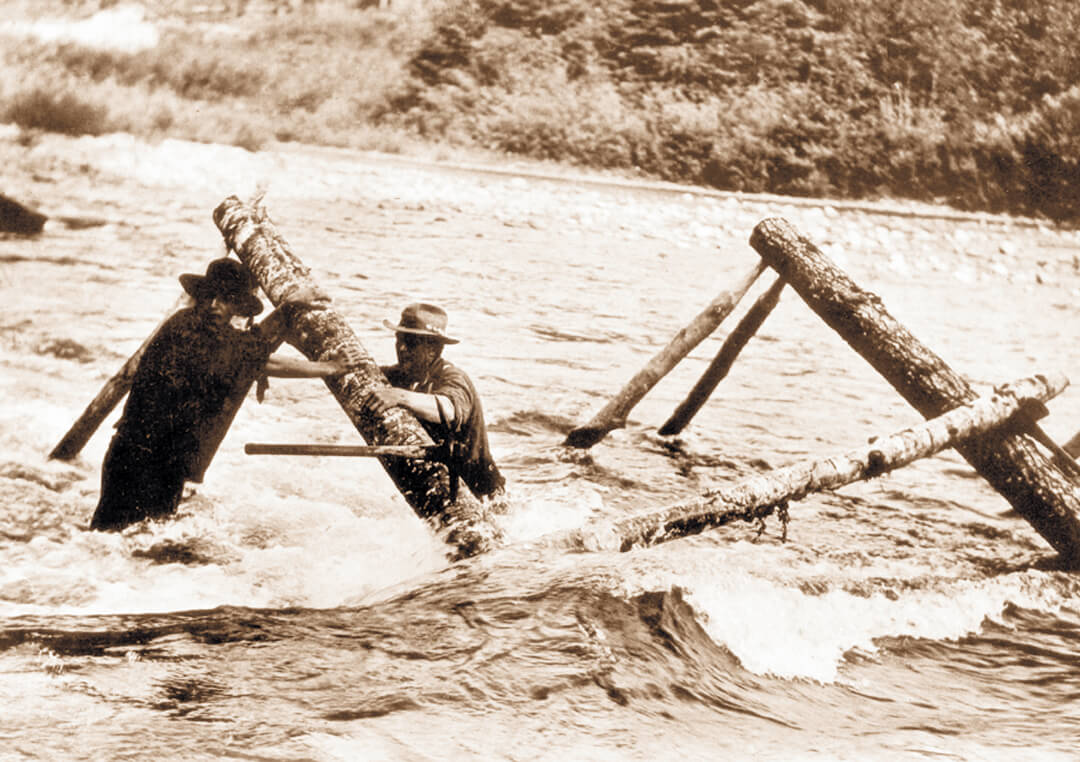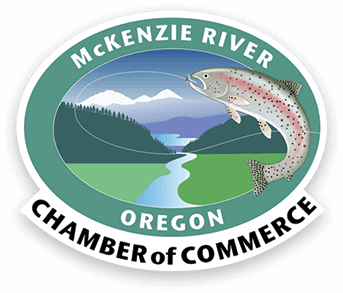McKenzie River History

The River
The McKenzie River corridor has been home to people for over 8000 years. The Molalla and Kalapuya people traveled along the river and on ridge-tops during their annual circuit of harvesting salmon, lamprey eel, camas root, huckleberries, medicinal plants and hunting.
Although European trading ships had been exploring the Oregon Coast for several centuries, it was not until 1812 that the first Europeans began exploring and trapping fur animals in the southern Willamette Valley. Among them was Donald Mackenzie who, as assistant leader of the Astorian Overlanders Expedition, hunted in the area for six weeks. The first map to show his name on the river was made in 1824 by Hudsons’ Bay Company who he worked for at the time. The McKenzie River is one of the few rivers in Oregon that did not retain its Native American name on this map.
The first recorded travel along the entire length of the river by Europeans was in 1853 when several scouts from “The Lost Wagon Train” found their way down the McKenzie River from the east side of the Cascades. The earliest homestead recorded in the upper McKenzie River valley was staked by James Belknap in 1861 just west of the South Fork McKenzie.
In the 1870’s two hot-springs resorts were in the upper McKenzie River area, increasing recognition of the area as a tourist destination. Stage stops for the wagon-road were developed every 6 to 10 miles apart, establishing the communities that are named along the river today.
In 1893 all lands within the McKenzie River watershed not already claimed by homesteaders became part of the National Forest or Bureau of Land Management. Automobiles began using the McKenzie River highway in the early 1900s, and soon became popular as a scenic motoring destination and for fishing lodges.
The McKenzie River Chamber of Commerce
The McKenzie River Chamber of Commerce formed in 1957 as a political action group. Local businesses and residents joined together to fight a dam proposed by the U.S. Army Corps of Engineers that would have formed a lake from mp 33 to mp 47.5 (Vida to Blue River). The dedication and hardwork of this group of volunteers proved successful.
In the late 1960’s Chamber volunteers staffed a small recreational trailer that moved up and down to different sites along the river. These volunteers handed out tourist information to highway travelers during the summer months in the portable office.
During 1971, the Chamber moved into its first real office, an unused U.S. West phone company switching station in Leaburg and acquired its first staff person, a volunteer office manager.
In 1994 an agreement was worked out by the board with Lane County to receive a percentage of the room tax monies generated by lodging along the McKenzie corridor. This enabled the Chamber to implement a small marketing plan to increase overnight stays in the valley and to hire an office manager to respond to visitor requests about amenities in the valley.
In 1996 the Chamber, in partnership with Lane County, USFS, BLM, Army Corps of Engineers, EWEB, State Parks, ODFW, and the US West Pioneers (retired telephone workers) moved the office to the Old McKenzie Fishery Hatchery on Leaburg Lake. The Chamber opened the first permanent Visitors Information Center at this location. This was all made possible by a USFS grant of $212,000 to Lane County and the Chamber to refurbish the historic buildings on the site.
By the year 2000 the hatchery site was in full operation with a paid office/tourist information manager and volunteers who worked on the site. By 2001, when the Lane County Parks Dept. became involved, the site was able to be open to the public year ‘round by the addition of volunteer camp hosts during the summer months.
Lane County room tax monies have also been helpful in providing many projects to increase overnight stays in the valley: These include indoor visitor annexes in Blue River and Rainbow; and outdoor kiosks in Walterville and the hatchery site; community “Welcome” signs in Leaburg, Rainbow, and McKenzie Bridge; hospitality training for employees at local businesses; advertising in state tourism campaigns, as well as Lane County and local recreation/traveler’s guides; full color geographical maps of the area; and an events calendar for McKenzie Valley community fairs and festivals.

